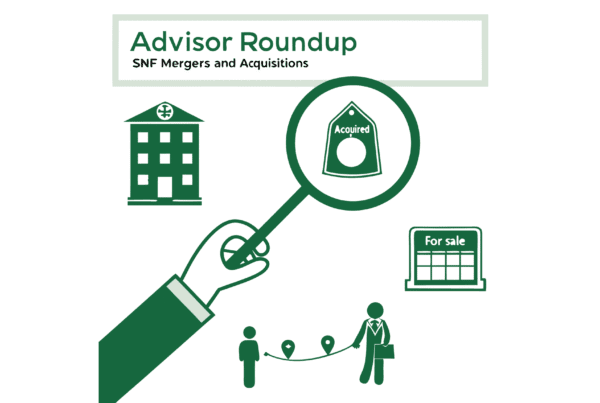The decision to sell your medical practice is a significant milestone. For owners in Salt Lake City’s sleep medicine market, this moment presents a unique opportunity. But turning that opportunity into a successful outcome requires strategic timing, proper positioning, and a clear understanding of your practice’s true worth. This guide provides insights into the local market, key valuation drivers, and the steps needed to navigate the sale process and maximize your practice’s value.
Salt Lake City Market Overview
The Salt Lake City area is a robust and growing healthcare hub. For sleep medicine specialists, this presents a dynamic environment. Buyers are actively looking for well-run practices in this region, driven by favorable demographics and a steady patient base.
Strong Local Demand
The presence of major hospital-affiliated programs, including those at Intermountain Health and the University of Utah, signals a high demand for sleep studies and related treatments. For an independent practice, this is not a threat. It is proof of a healthy market. An established practice with a loyal patient base and strong referral network is an attractive target for buyers seeking to expand their footprint in a proven market.
A Competitive Edge
In a market with established players, differentiation is key. Your practice’s unique strengths, whether in specialized services like oral appliance therapy, a loyal referral base, or exceptional patient care, become powerful selling points. A buyer isn’t just acquiring a facility. They are acquiring your specific position and reputation within the Salt Lake City community.
Key Considerations for Sellers
When preparing to sell, your focus should shift to the details that define your practice’s value beyond its revenue. A potential buyer will scrutinize several areas. Do you offer specialized services, such as CPAP alternatives or advanced oral appliance therapy, that set you apart? Accreditations, like those from the ACHC for a sleep lab, demonstrate a commitment to quality and compliance. Furthermore, the expertise and loyalty of your staff, combined with a robust network of patient referrals, are invaluable assets. These are not just operational details. They are the core components of a compelling story that justifies a premium valuation. Your task is to present these strengths clearly and professionally.
Understanding Market Activity
While every transaction is unique, it’s important to understand how buyers determine value. Relying on outdated “rules of thumb” can leave significant money on the table. Sophisticated buyers, including private equity groups and health systems, do not base their offers on a simple revenue multiple. They focus on profitability, specifically Adjusted EBITDA (Earnings Before Interest, Taxes, Depreciation, and Amortization). This metric provides a truer picture of a practice’s cash flow and a more accurate foundation for its valuation. The difference in approach is significant.
| Valuation Method | How It Works | Typical Outcome |
|---|---|---|
| Revenue Multiple | A simple multiplier applied to annual revenue. | Often undervalues profitable practices. |
| Adjusted EBITDA Multiple | A multiplier applied to normalized pre-tax profit. | Reflects true cash flow and a practice’s real worth. |
Understanding this distinction is the first step toward securing a fair valuation. Buyers pay for proven profitability, not just top-line revenue.
The Practice Sale Process
Many physicians believe the process of selling a practice begins when they decide it’s time to exit. In reality, the most successful sales begin years in advance. The process is a multi-stage journey that requires careful planning. It starts with a comprehensive valuation and preparing financial and operational documents. This is followed by a confidential marketing phase to identify and vet qualified buyers. Once a suitable offer is accepted, the most critical stage begins: due diligence. This is where the buyer examines every aspect of your practice. Proper preparation years, or even months, ahead of time can prevent unexpected challenges during this intense period and ensure a smooth path to closing and a successful transition.
How Your Practice is Valued
A practice’s true value is found in its adjusted profitability, not its reported net income. The key metric is Adjusted EBITDA. We start with your earnings, then “normalize” them by adding back expenses that a new owner would not incur. This includes things like your personal auto lease, excess owner salary above a fair market rate, or one-time capital expenditures. This adjusted figure represents the real cash-generating power of your practice. That number is then multiplied by a specific multiple, which is influenced by several factors:
- Provider Reliance. Practices that do not depend solely on the owner generate higher multiples. An associate-driven model signals stability to a buyer.
- Scale and Growth. Larger practices with a clear history of growth and a strong plan for the future command premium valuations.
- Revenue Streams. A healthy mix of payers and any additional revenue from ancillary services, like DME, can increase your multiple.
- Clinical Infrastructure. The use of modern EHR systems and efficient operational workflows demonstrates a mature and well-managed practice.
Post-Sale Considerations
A successful transaction extends beyond the closing date. Planning for what comes next is critical for protecting your legacy and financial future. A key part of any deal is the transition plan. Ensuring your staff is cared for and your patients experience a seamless handover maintains the goodwill you worked so hard to build. You also need to consider your own future. Do you want to exit completely, or are you open to a continued role? Deal structures can be flexible, including strategic partnerships or rollover equity that allow you to share in the practice’s future success. Finally, the structure of your sale has major tax implications. Planning ahead with an advisor can significantly impact your net proceeds, ensuring the rewards of your life’s work are maximized.
Frequently Asked Questions
What makes Salt Lake City a good market for selling a sleep medicine practice?
Salt Lake City is a growing healthcare hub with strong local demand due to major hospital-affiliated programs like Intermountain Health and the University of Utah. This creates a healthy market with buyers actively seeking well-run sleep medicine practices.
What factors can increase the valuation of a sleep medicine practice in Salt Lake City?
Key valuation drivers include specialized services like oral appliance therapy, accreditations such as ACHC, a loyal patient and referral base, a diversified payer mix, modern EHR systems, and an associate-driven provider model which indicates stability.
How do buyers typically value sleep medicine practices in this market?
Sophisticated buyers focus on Adjusted EBITDA rather than simple revenue multiples. Adjusted EBITDA normalizes earnings by adding back non-recurring expenses and represents a practice’s true cash flow, resulting in a more accurate valuation.
What steps should a physician take to prepare their practice for sale in Salt Lake City?
Preparation includes obtaining a comprehensive valuation, organizing financial and operational documents, confidentially marketing to qualified buyers, and preparing for due diligence. Early and thorough preparation helps ensure a smooth sale process and maximum value.
What are important post-sale considerations for physicians selling their sleep medicine practice?
Planning for the transition of staff and patients is crucial to maintain goodwill. Physicians should consider their future role, potential deal structures like strategic partnerships or rollover equity, and tax planning to maximize net proceeds from the sale.



